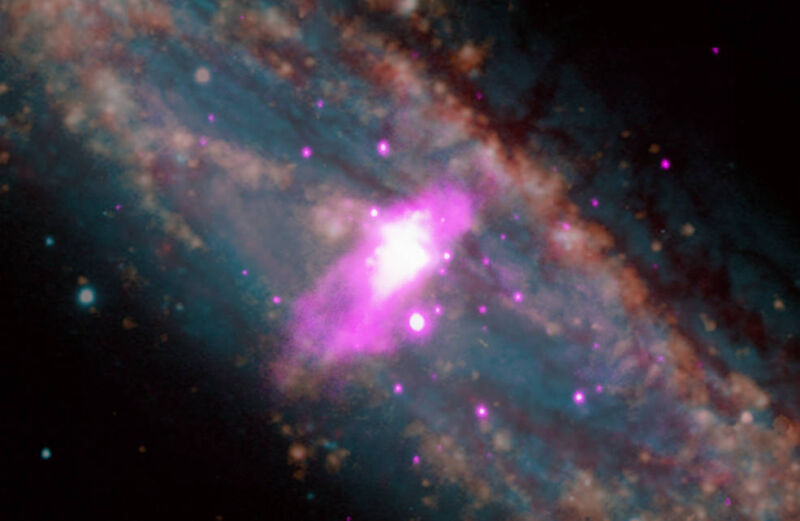Enlarge / X-ray emissions (purple) superimposed on a visible light image of a galaxy shows the galaxy winds being launched. (credit: X-ray: NASA/CXC/The Ohio State Univ/S. Lopez et al.; H-alpha and Optical: NSF/NOIRLab/AURA/KPNO/CTIO; Infrared: NASA/JPL-Caltech/Spitzer/D. Dale et al; Full Field Optical: ESO/La Silla Observatory.)
One of the ways massive stars, those at least 10-times bigger than the Sun, reach their end is in a supernova—an enormous explosion caused by the star’s core running out of fuel.
One consequence of a supernova is the production of galactic winds, which play a key role in regulating star formation. Although galactic winds have already been observed in several nearby galaxies, a team of scientists has now made the first direct observations of this phenomenon in a large population of galaxies in the distant Universe, at a time when galaxies are in their early stages of formation.
Feedback
According to the study’s lead author, Yucheng Guo, of the Centre de Recherche Astrophysique de Lyon, galactic winds are an important part of the galaxy evolution models.
Read 9 remaining paragraphs | Comments

